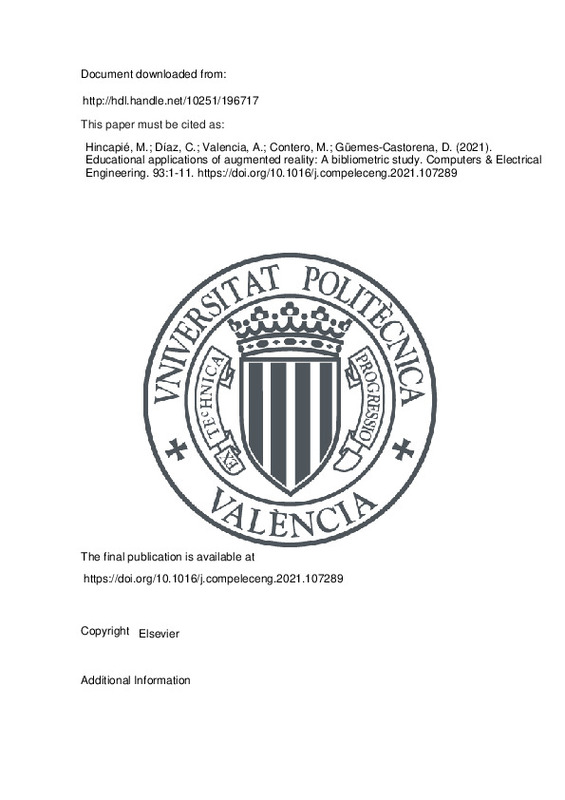JavaScript is disabled for your browser. Some features of this site may not work without it.
Buscar en RiuNet
Listar
Mi cuenta
Estadísticas
Ayuda RiuNet
Admin. UPV
Educational applications of augmented reality: A bibliometric study
Mostrar el registro completo del ítem
Hincapié, M.; Díaz, C.; Valencia, A.; Contero, M.; Güemes-Castorena, D. (2021). Educational applications of augmented reality: A bibliometric study. Computers & Electrical Engineering. 93:1-11. https://doi.org/10.1016/j.compeleceng.2021.107289
Por favor, use este identificador para citar o enlazar este ítem: http://hdl.handle.net/10251/196717
Ficheros en el ítem
Metadatos del ítem
| Título: | Educational applications of augmented reality: A bibliometric study | |
| Autor: | Hincapié, Mauricio Díaz, Christian Valencia, Alejandro Güemes-Castorena, David | |
| Entidad UPV: |
|
|
| Fecha difusión: |
|
|
| Resumen: |
[EN]
Augmented Reality (AR) has been used successfully in several industries; one of these is education. A systematic understanding of how AR contributes to education still lacks studies about the content type and its ...[+]
|
|
| Palabras clave: |
|
|
| Derechos de uso: | Reconocimiento - No comercial - Sin obra derivada (by-nc-nd) | |
| Fuente: |
|
|
| DOI: |
|
|
| Editorial: |
|
|
| Versión del editor: | https://doi.org/10.1016/j.compeleceng.2021.107289 | |
| Agradecimientos: |
The authors thank the editors and two anonymous reviewers for their highly constructive feedback.
The authors also would like to acknowledge the technical support of Writing Lab, Institute for the Future of Education, ...[+]
|
|
| Tipo: |
|







![[Cerrado]](/themes/UPV/images/candado.png)


